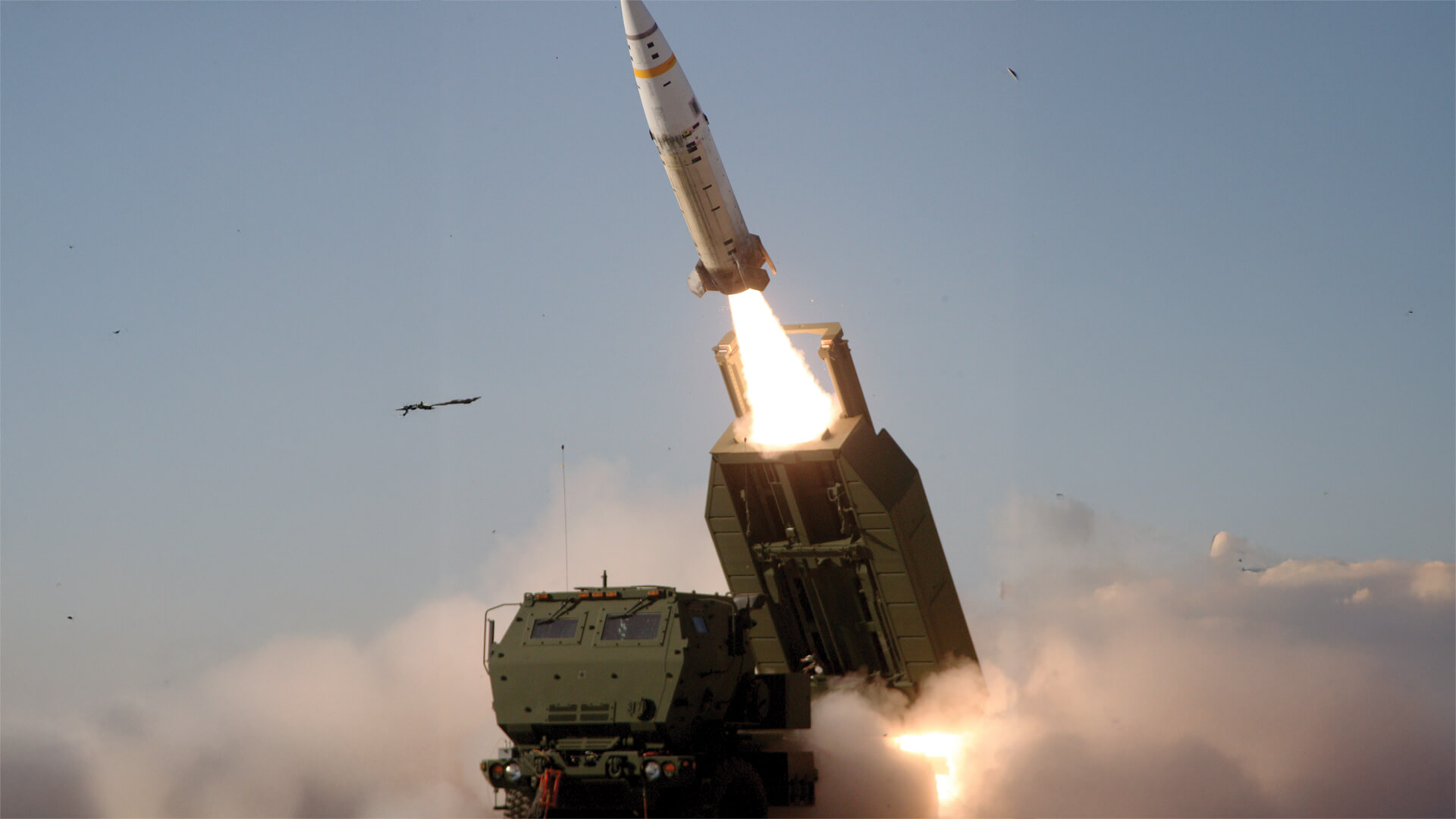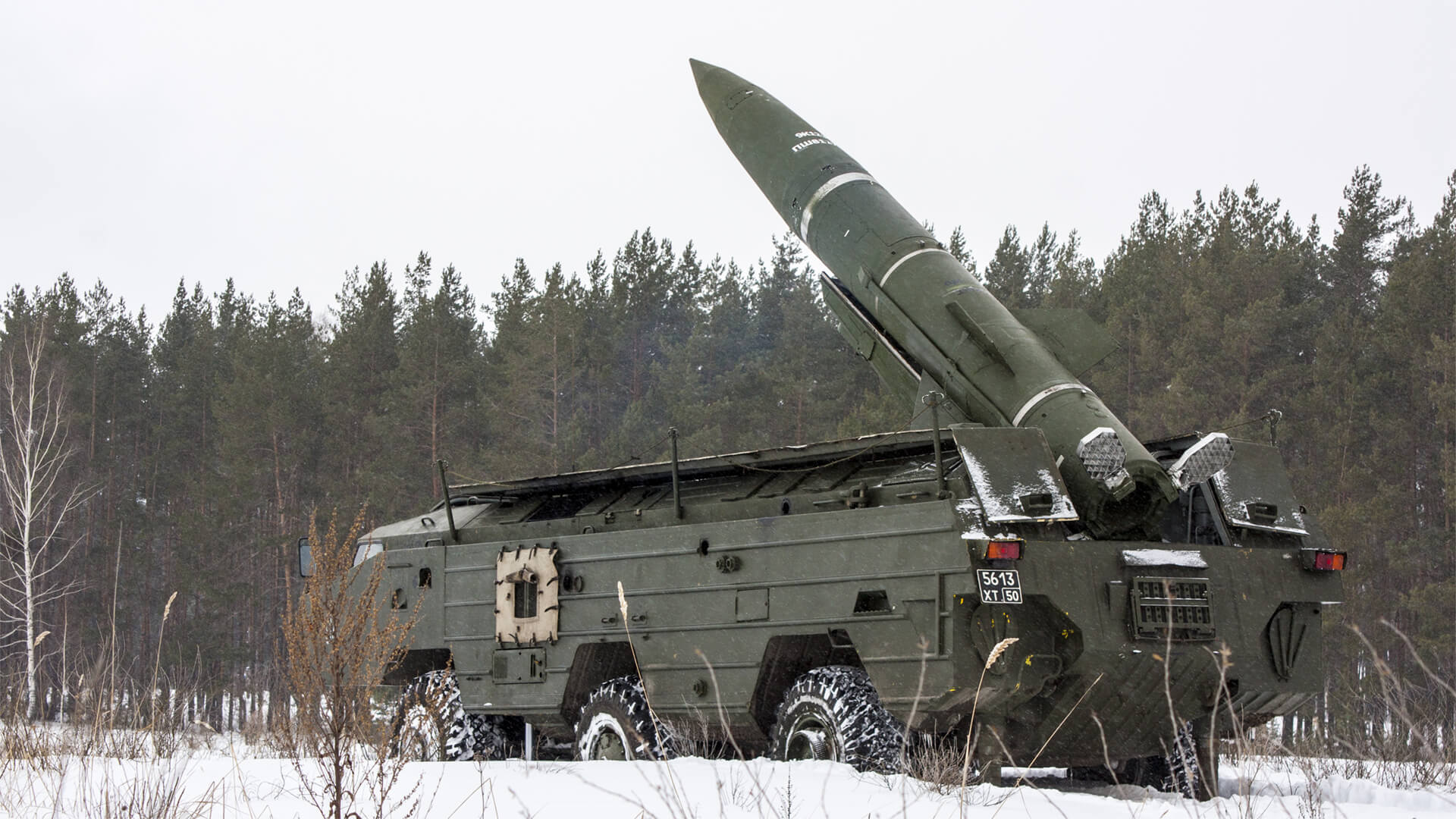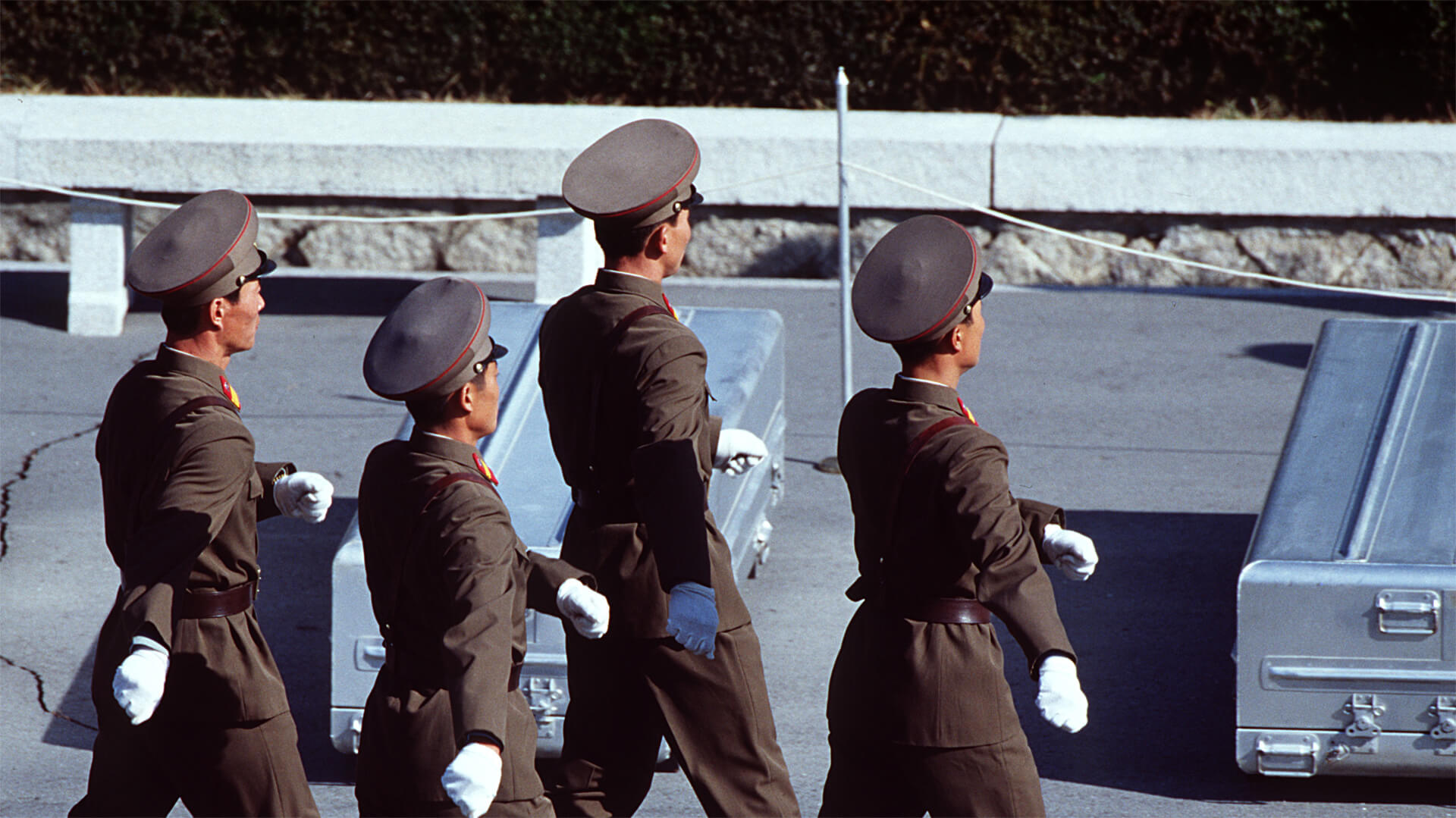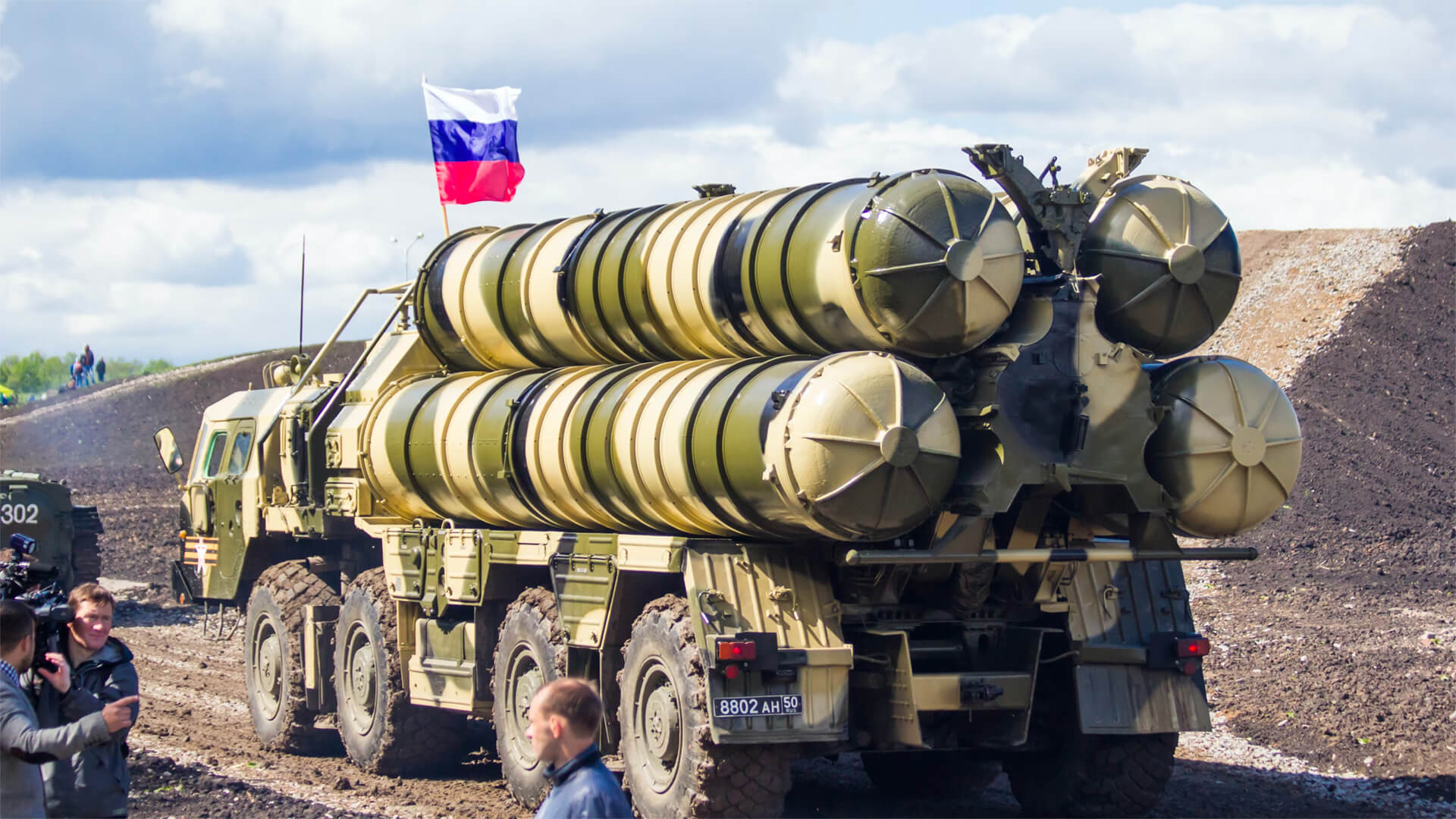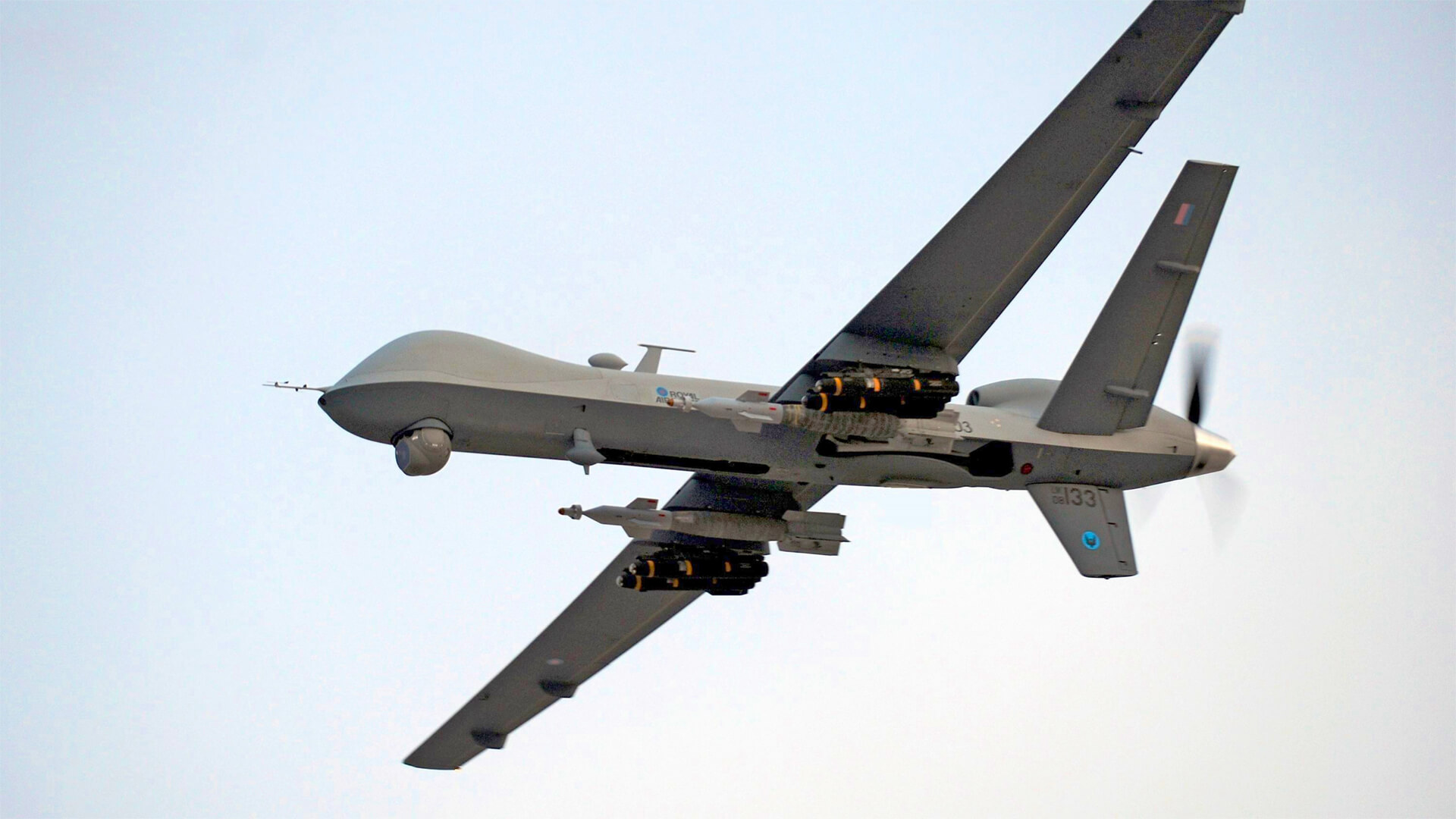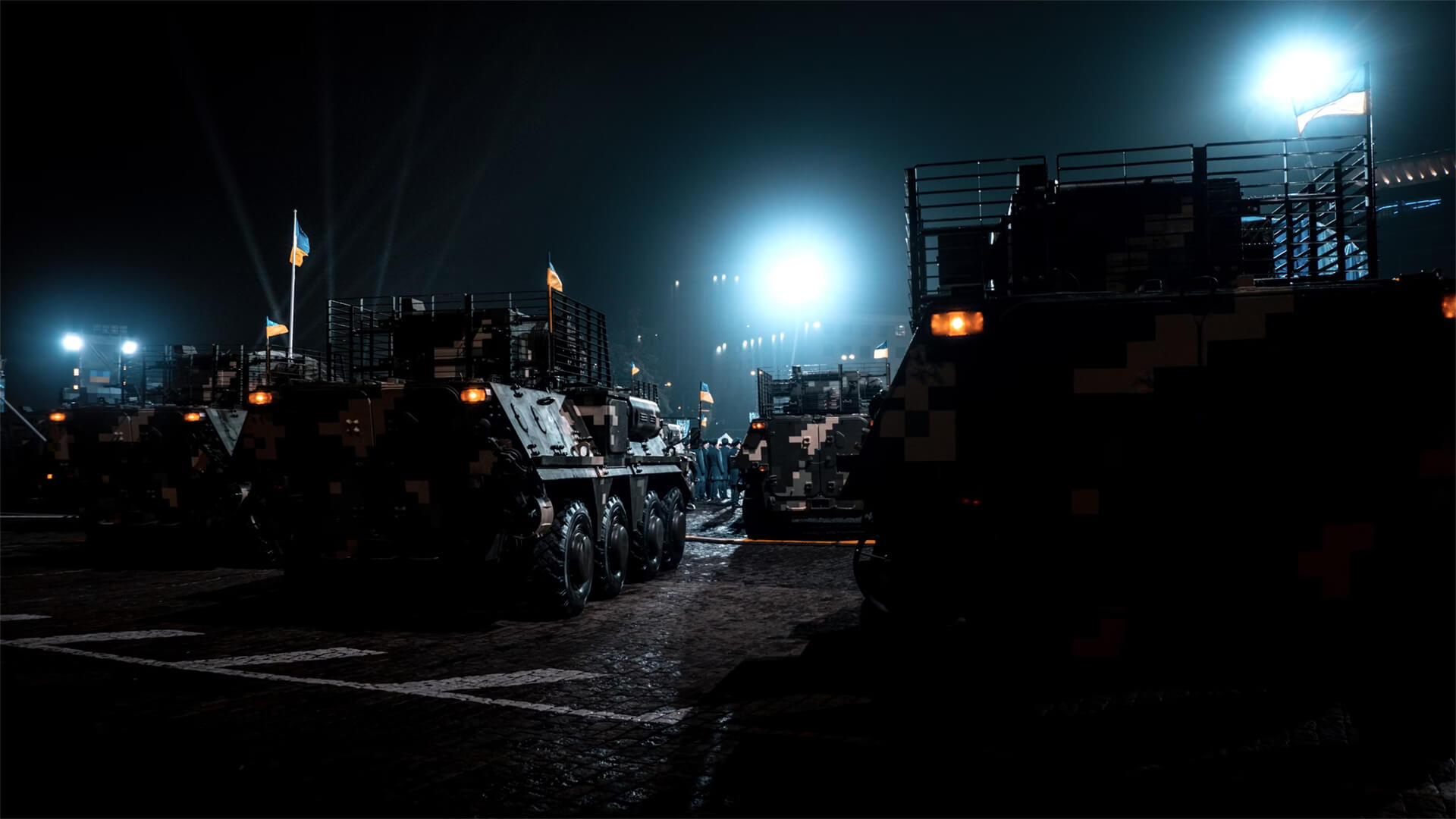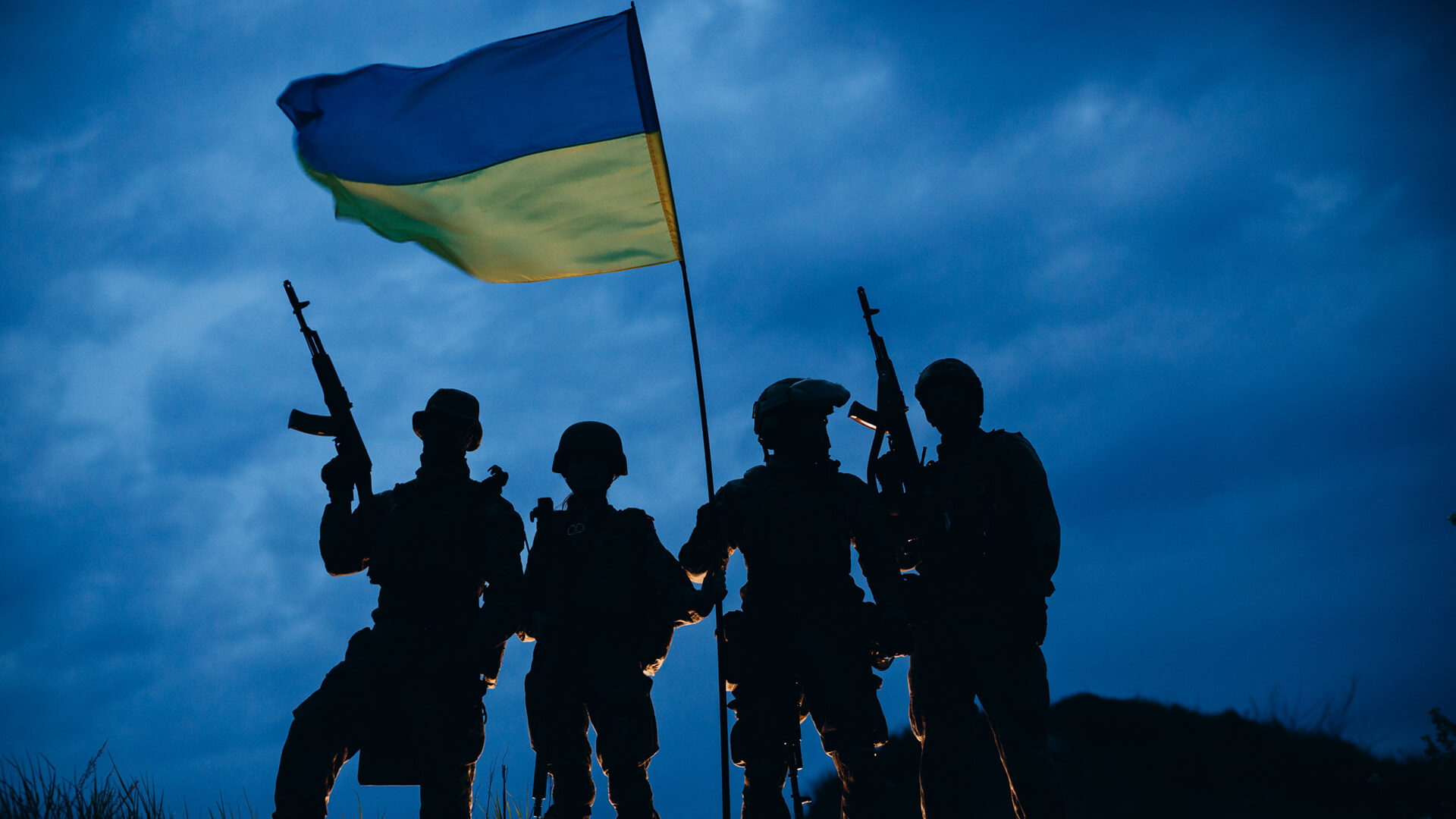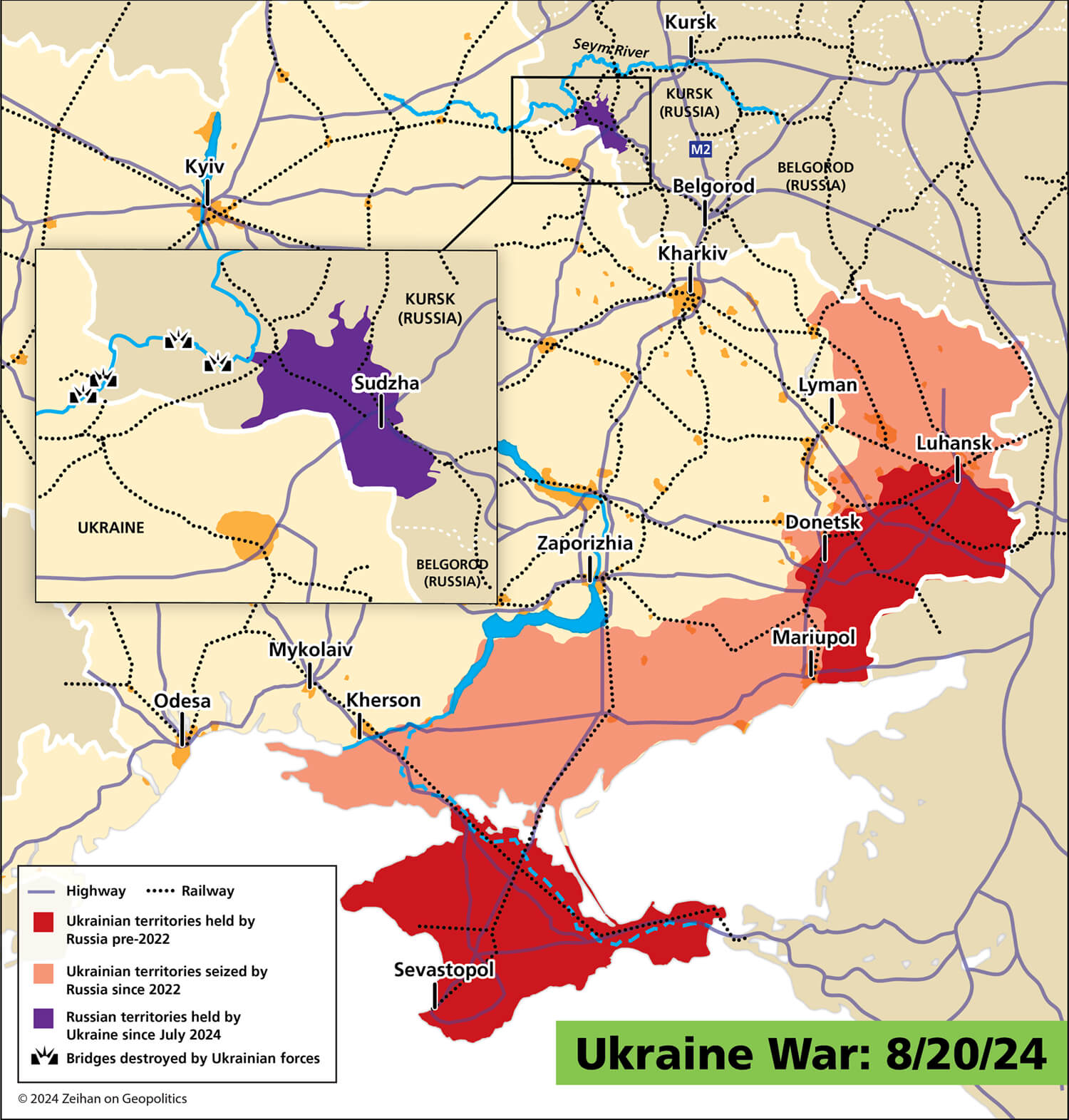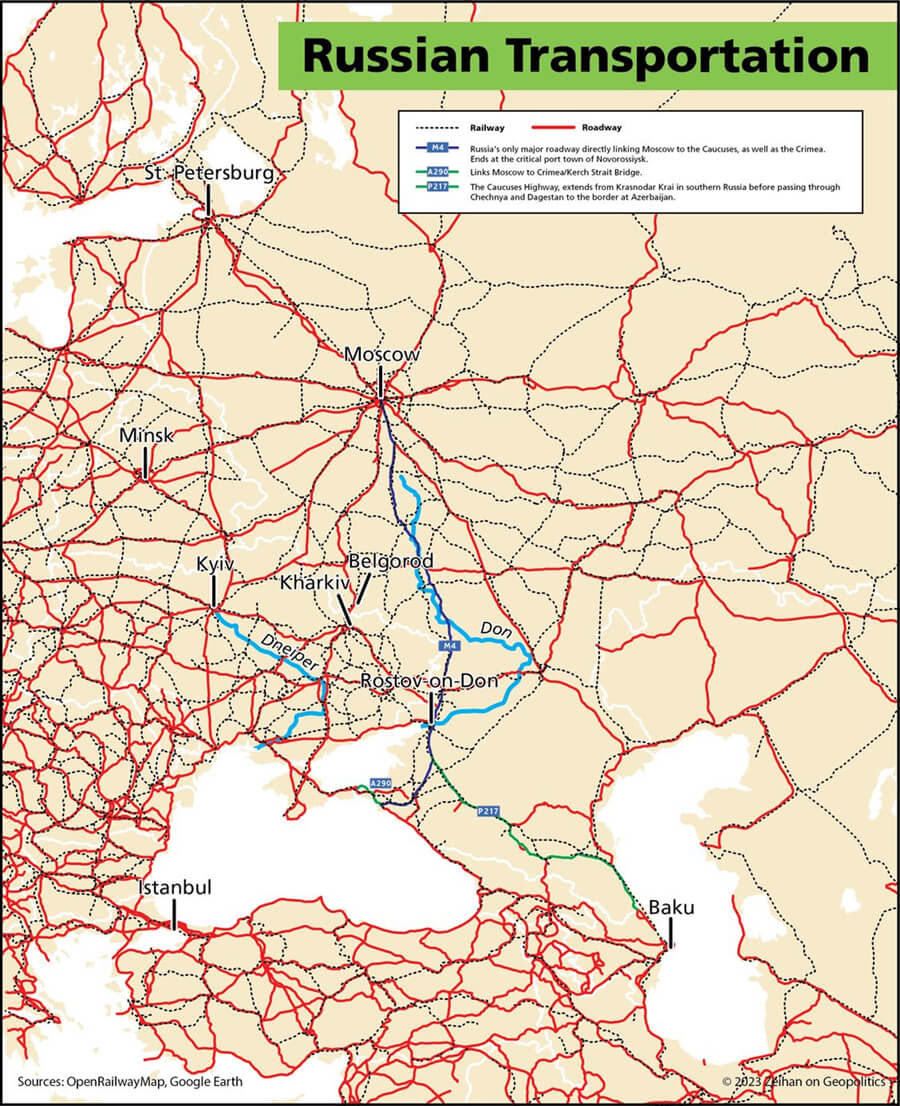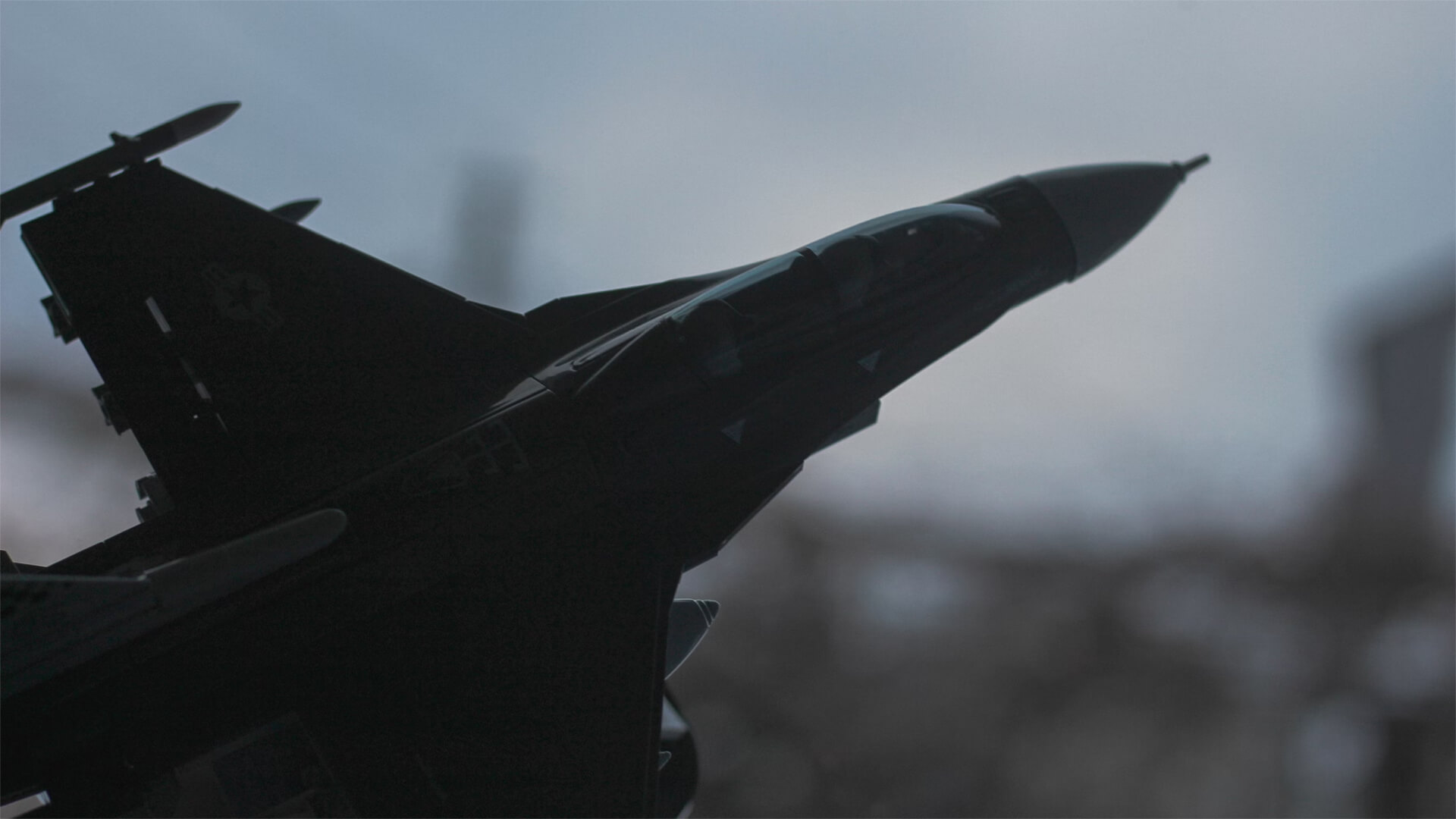The Biden administration just gave Ukraine the greenlight to use American weaponry inside of Russian territory. So, what does this mean for the future of the Ukraine War?
The biggest change will be Ukraine’s usage of long-range ballistic missiles (mainly the Army Tactical Missile Systems, or ATACMS) to target military infrastructure within the Russian border. While there will be some impacts to Russian logistics, this likely won’t lead to any significant breakthroughs. And it doesn’t look the Russians are too worried about this either…otherwise someone important would have been doing the press conference.
Without too much concern for immediate escalation, this greenlight allows Ukraine to soften Russian positions and supply lines along the frontlines. But perhaps the biggest thing to watch, is that Trump now has another card up his sleeve once he gets into office and begins his negotiations with Russia.
Here at Zeihan on Geopolitics, our chosen charity partner is MedShare. They provide emergency medical services to communities in need, with a very heavy emphasis on locations facing acute crises. Medshare operates right in the thick of it, so we can be sure that every cent of our donation is not simply going directly to where help is needed most, but our donations serve as a force multiplier for a system already in existence.
For those who would like to donate directly to MedShare or to learn more about their efforts, you can click this link.
Transcript
Hey everybody. Peter Zeihan here, coming to you from chilly Colorado. It is Monday, November 18th, and yesterday, on the 17th, the Biden administration lifted restrictions on the use of American weapons by the Ukrainian government. They can now launch wherever they want in Russian space. The weapon system that is of the most importance are the outcomes, which are kind of a rocket ballistic missile that has a range of about 200 miles.
It’s broadly expected that within the next day or three, the Ukrainians will be using them to target things like ammo dumps, air assets, and especially rail bridges—basically anything to snarl the logistics on the Russian side of the equation.
The two areas you’re going to see the most activity are in the vicinity of Kursk, where the Ukrainians have a foothold in Russian territory, and an area in the Donbas near where the Russians have been focusing strongly on capturing the city of Picross, given that it’s a rail hub.
The whole idea is to disrupt the ability of the Russians to get military assets to those theaters. There’s probably not going to be too much of an impact on things like air power on the Russian side because already 90% of the jets that the Russians have been using to operate in Ukraine are beyond that 200-mile range.
You might push a few more back, so this is concentrating the fight on those two main salients. But it’s probably not going to generate any sort of meaningful breakthrough in either direction, though it will certainly help the Ukrainians hold out.
There are three big things that we do need to consider now that we’ve had this kind of upgraded military capacity.
First of all, I don’t see this as a meaningful escalation in the war. I don’t think it’s going to generate any sort of significant response by the Russians. That’s not just because the Russians have, by my count, had over 200 “red lines” that the West has eventually skipped across.
You can always tell if the Russians are serious or not by who does the speaking. In this case, the Russian that came out and condemned the American action, saying this was an escalation, was a guy by the name of Dmitry Peskov, who is basically their press attaché. It didn’t even come from a policymaker. So, you know, it’s not serious.
I don’t expect the Russians to do anything significantly more. Keep in mind, the Russians have been crossing a lot of what the West would consider red lines—with spies, sabotage, and even bringing in North Koreans to fight in the war. There have been a lot of steps here, and that was probably ultimately what drove the Biden administration to take this action. But I don’t think this is an escalation in the traditional sense.
Second, if the Russians want to rebuild their credibility when it comes to red lines, they have to talk. The way you establish red lines and mutual deterrence is through a direct face-to-face summit. Putin, however, has refused to pick up the phone and call any leaders who are decision-makers because he knows that if he does, everything is on the table.
He would then have to give something up. Since the Russians have been pushing broad-spectrum interference in Western affairs—whether politically, economically, or strategically—for three years now, he’d have to give up a lot of that to get anything he wants. So it’s simpler to just avoid communication altogether.
We’ve been here before. When the Soviet Union developed its first atomic weapon back in 1949, that was the height of the Cold War. Things were really sketchy, and we didn’t get our first real bilateral summit after that weapons test until 1955, after Stalin had died. I’m not saying we have to wait for Putin to die or anything like that, but we’re not in a position in Russia politically where it’s feasible to have that conversation.
As long as the Russians feel they’re making incremental gains in Ukraine, which they have for about a year now, there’s no need for a broader renegotiation of the relationship. Always keep in mind that Ukraine was never a one-off; it’s the ninth post-Soviet conflict the Russians have either instigated or been involved in, and it won’t be the last.
Regardless of how Ukraine gets settled, one way or another, there will be another series of wars further west that will involve NATO countries until we get to that point. Putin feels that negotiations are better carried out on the battlefield rather than by phone or in person.
Which brings us to the third thing: this is really interesting timing for this step by the Biden administration. Obviously, Biden’s not going to be president after January 20th, and there’s going to be no succession within the Democratic structures.
Donald Trump is coming back, and here we have a very clear step forward that puts a fascinating chip on the table for potential negotiations down the road. If there’s anything we understand about Donald Trump, it’s that he sees everything differently. Putting this card into his hand to play with Putin at a later time is kind of fascinating.
What Trump will do with this is entirely up to him, but Biden appears to be setting the stage for Trump to have whatever he needs to force the Russians to the table in whatever way he wants to. This is a really interesting approach to bipartisan foreign policy that we used to see all the time during transition periods but really haven’t seen in the last eight years.
All right, that’s it for me. Everyone take care.


